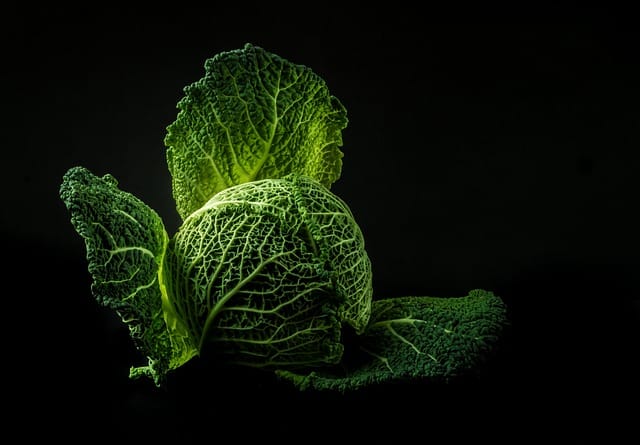How to grow Cabbages
Welcome to the comprehensive guide on how to grow cabbage, a nutritious and versatile vegetable that can be enjoyed in various dishes

In this article:
- Introduction
- Choosing the right cabbage variety
- Preparing the soil
- Planting the cabbage seeds
- Caring for cabbage seedlings
- Transplanting the cabbage seedlings
- Providing optimal growing conditions
- Watering and fertilizing cabbage plants
- Controlling pests and diseases
- Harvesting cabbage heads
- Storing and preserving cabbage
- Common challenges and troubleshooting
- Tips for successful cabbage growing
- Conclusion
Introduction
Welcome to the comprehensive guide on how to grow cabbage, a nutritious and versatile vegetable that can be enjoyed in various dishes. Whether you are a seasoned gardener or a beginner, this article will provide you with all the information you need to successfully grow your own cabbage.
Choosing the right cabbage variety
Before getting started, it is important to choose the right cabbage variety for your growing conditions and preferences. There are different types of cabbage, such as green cabbage, red cabbage, and savoy cabbage, each with its own unique flavor and characteristics. Consider factors like maturity time, size, and disease resistance when selecting your cabbage variety.
Preparing the soil
Good soil preparation is essential for the healthy growth of cabbage plants. Cabbage requires well-draining soil that is rich in organic matter. Start by removing any weeds or debris from the planting area. Loosen the soil with a garden fork or tiller and incorporate compost or well-rotted manure to improve its fertility.
Planting the cabbage seeds
Cabbage can be started from seeds or seedlings. If you choose to start from seeds, sow them indoors about 6-8 weeks before the last frost date in spring. Plant the seeds in seed trays or small pots filled with seed starting mix. Keep the soil consistently moist and provide adequate light for germination.
Caring for cabbage seedlings
Once the seeds have germinated and grown into seedlings, they require care and attention to ensure their healthy development. Place the seedlings in a sunny location and gradually acclimate them to outdoor conditions by exposing them to increasing periods of sunlight. Water the seedlings regularly and protect them from extreme temperatures.
Transplanting the cabbage seedlings
When the cabbage seedlings have grown to a suitable size and the threat of frost has passed, it's time to transplant them into the garden. Choose a location with full sun and enough space for the plants to grow. Dig holes that are slightly larger than the root ball of each seedling and gently place the seedlings into the holes. Firm the soil around the plants' base and water thoroughly.
Providing optimal growing conditions
Cabbage plants thrive in cool, moist conditions. Ensure that the plants receive at least 6 hours of direct sunlight each day. Mulching around the plants can help retain moisture and prevent weed growth. Additionally, monitor the pH level of the soil and maintain it between 6.0 and 6.8 for optimal growth.
Watering and fertilizing cabbage plants
Proper watering is crucial for cabbage plants. Keep the soil consistently moist by providing approximately 1-1.5 inches of water per week. However, be cautious to avoid overwatering, as it can lead to fungal diseases. Fertilize the plants every 3-4 weeks with a balanced organic fertilizer to promote healthy growth and productivity.
Controlling pests and diseases
Cabbage plants are susceptible to various pests and diseases, such as cabbage worms, aphids, and clubroot. Implement preventive measures like using row covers, practicing crop rotation, and maintaining good garden hygiene to minimize the occurrence of pests and diseases. If necessary, use organic insecticides or other natural methods to control infestations.
Harvesting cabbage heads
Harvesting cabbage heads at the right time ensures maximum flavor and quality. Cabbage heads are ready to be harvested when they reach a desirable size and feel firm. Use a sharp knife to cut the heads off at the base, leaving a few outer leaves intact. Harvest the cabbage heads before they crack or split.
Storing and preserving cabbage
Proper storage techniques are essential for preserving the freshness and flavor of harvested cabbage. Store cabbage heads in a cool, dry place like a root cellar or refrigerator. Alternatively, you can blanch and freeze the cabbage for long-term preservation.
Common challenges and troubleshooting
While growing cabbage, you may encounter challenges like cabbage worms, nutrient deficiencies, or improper head formation. Identify the problem early and take appropriate action, such as applying organic pesticides, adjusting nutrient levels, or providing additional support to the developing heads.
Tips for successful cabbage growing
- Plant cabbage in a location that receives adequate sunlight and has good air circulation.
- Keep the soil consistently moist, but avoid overwatering.
- Apply mulch around the plants to conserve moisture and suppress weed growth.
- Monitor for pests and diseases regularly and take preventive measures.
- Harvest cabbage heads at the right time to ensure optimal flavor and quality.
Conclusion
Growing cabbage can be a rewarding experience that allows you to enjoy fresh and nutritious produce straight from your garden. By following the guidelines provided in this article, you will be equipped with the knowledge and skills to successfully grow cabbages, ensuring a bountiful harvest of this versatile vegetable.
